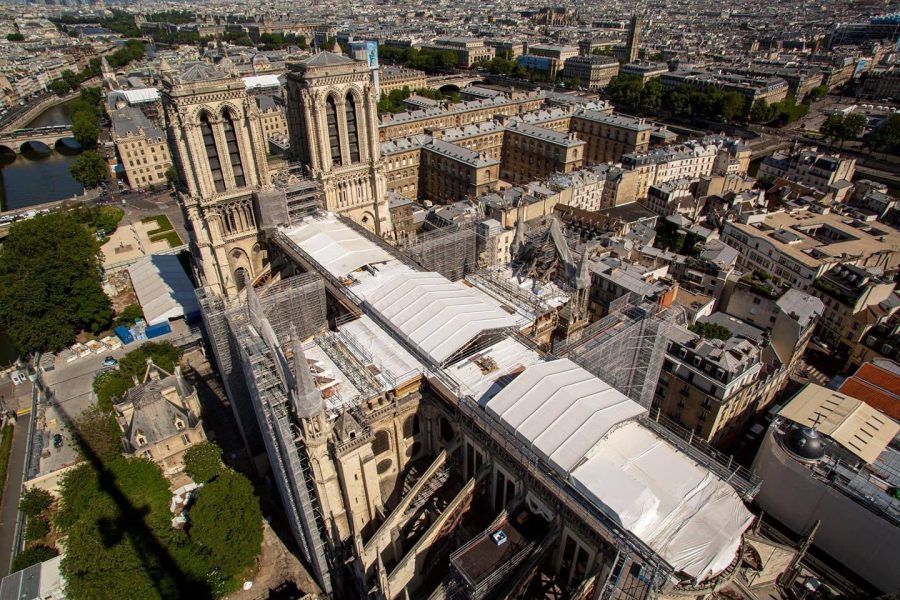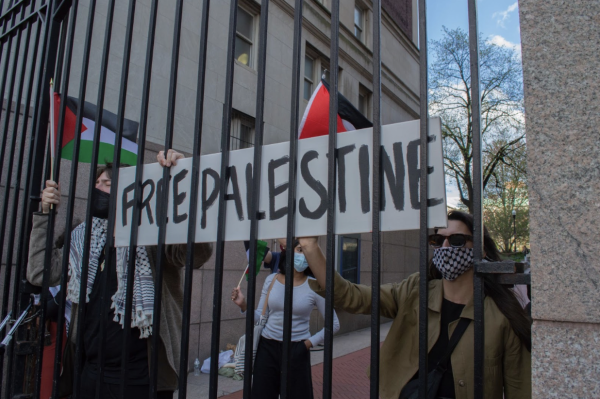Our Lady of Tears in Recovery
French President Emmanuel Macron recently announced the 2024 reopening of the Notre-Dame cathedral following the devastating fire in 2019. The building will reopen shortly before the 2024 Paris Olympics. While it may seem like just a building, the Notre-Dame cathedral has come to mean something much more in its 850-year history.
Not only signifying the Catholic Church, which was once a powerful but now dwindling institution in France, the cathedral has also played a role in some of France’s most momentous events.
The Notre-Dame cathedral, which broke ground in 1163, saw the crowning of Henry VI of England during The Hundred Years’ War and Napoleon as emperor in 1804. Napoleon even restored Notre-Dame after the perils of the French Revolution, when the cathedral’s treasures were destroyed and plundered. Napoleon had his eyes set on an unconventional crowning ceremony in Notre-Dame.
Napoleon ushered in a new age that saw the return of Catholicism as the majority religion. In 1944, the cathedral held a mass celebrating the French liberation from the Germans.
Into the late 20th and beginning of the 21st century, the cathedral saw its introduction to a new generation with Victor Hugo’s The Hunchback of Notre-Dame. It has since become a popular tourist spot and serves as a lesson in art and gothic architecture.
For the French, Notre-Dame has seen it all, both the good and the bad. It bears the marks of history, so when the beloved cathedral went up in flames back in April 2019, it made headlines not only in France, but around the world. I found myself in disbelief and, in joining with the masses, posted a picture to my Instagram story of Notre-Dame from when I visited along with some generic captions. In reflecting, it is always fascinating to see how people react to tragedy, especially in the day and age of social media.
French billionaires reacted by pledging millions to rebuild the cathedral before the fire even went out. While this sentiment seems altruistic, many immediately found an issue, claiming that the speed and size of donations by France’s wealthiest citizens to rebuild a building was tone-deaf.
While these are all valid points, I don’t think the reason why so much money was raised is as simple as “white privilege” or billionaires wanting to receive a tax break. So, why is it that money was able to be pledged so quickly to rebuild Notre- Dame while so many international issues go ignored?
The restoration of art and architecture should be something we can all get behind. As Bernard Arnault, the richest man in Europe and top contributor to the rebuilding fund says, “it’s an empty controversy.”
Many argued that the contributions could be better used elsewhere to deal with numerous French social emergencies. France’s yellow-vest movement claimed that the ability to garner so much money for the cathedral after months of them protesting about issues such as the high cost of living and rampant poverty in Paris was frustrating.
Others have called attention to the fact that the United Nations’ goal for humanitarian aid for Yemen, which is on the brink of famine, has not been reached. Nor has much attention and money been accumulated for the destruction of religious heritage sites in Syria by ISIS.
The French identity, particularly in the past few centuries, has gone through a series of very drastic changes. From France’s collaborationist government with Nazi Germany, its troubled history of decolonization, a recent spike in terrorism and the current political divide, the French identity has taken a beating. There is no easy solution to any of this. But when one of your most beloved monuments catches fire, that is something you can fix.
Concerning the cries of the yellow-vest movement, the famine in Yemen, the religious sites in Syria, and all of the other problems in the world, there is no simple fix to them.
From a Western perspective, we have assigned cultural and historical significance to the cathedral, so when it catches fire, we all look. The cathedral was something tangible in peril. Since it is a state-owned building, it wasn’t insured, so the money had to come from somewhere. These French billionaires aren’t necessarily rebuilding a cathedral, but something much more important: a sense of French identity.
Bianca Parinello, FCRH ’23, is a political science and history major from Queens, N.Y.







